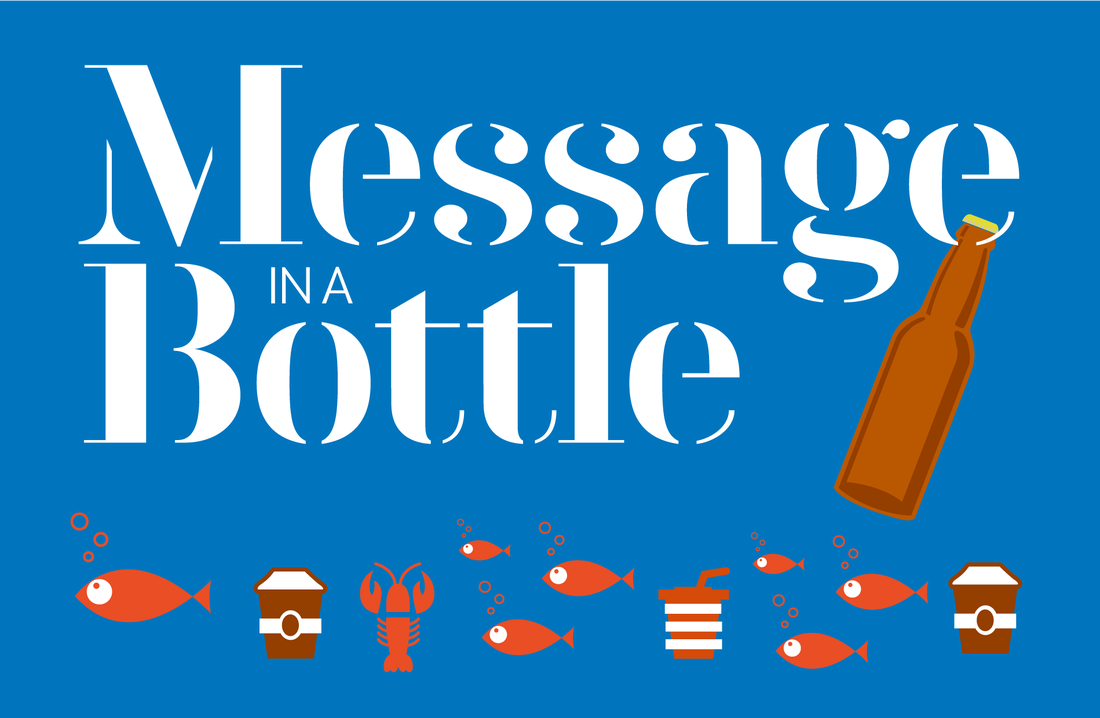|
Scotland, Autumn 2017
A few months ago I found a glass bottle at the back of my local beach. It’s a wild stretch of sand with little in the way of apparent waste or litter. The spring-tide had receded and I spied what I thought would simply be a broken bottle-neck peeking from the sand. Imagine my surprise asI bent down to pick it up, it emerged whole. A complete bottle, made of faint blue glass. The only damage, it was half full of sand and sea water. When I returned home and cleaned it up, I could clearly tell it was very old. With no thread in the neck and a slightly lopsided shape, complete with tiny air bubbles in the uneven glass. I checked it out online, to reveal that it dates from somewhere between 1840-1870. It’s incredible to think it has quite possibly languished in the sea from where it tumbled or probably discarded some 150 years ago, before eventually finding it’s way onto the shore. That’s a period that has seen two world-wars and twenty eight prime ministers. The advent of the mobile phone and the invention of the World-Wide-Web by Tim Berners-Lee. More specifically, it has survived 109,500 high-tides before succumbing to a spring tide in 2017. Therein lies the reality. We discard our rubbish without a second thought, it makes it’s way into land-fill or ideally, recycling. But what happens if it doesn’t end in either of those two destinations? Inevitably, gravity pulls it into waterways and rivers, where it will almost certainly end-up washed-out to sea. Forgotten, like this little blue bottle. Out of sight, out of mind – as the saying goes. This item of waste though, is regarded as a quaint piece of ‘junk’. There’s something charming about it’s old worldliness, stirring-up thoughts about who it originally belonged to. And because it’s glass, it’s both re-usable and recyclable. Belonging to an era when junk was more useful than it is today. In those days old pots and crocks were ground-down and used as asphalt along tracks or even as decorative patio material, as per the Bloomsbury set at Charleston in West Sussex. Question. Do we regard plastic bottles with a similar charm or usefulness? With the media ramping-up the discussion on single-use plastics, and how the seas are brimming with our thoughtless disposal of bottles, straws and even tampon-applicators. It’s difficult to consider in a 150 years time when our children’s children, retrieve several or even hundreds of whole plastic bottles from the beach, being held with the same regard and charm as this little blue bottle. That doesn’t mean we need to give up using plastics all together. It’s the single-use aspect that’s difficult to justify. Why buy a soft drink in a plastic bottle only to discard it five minutes later? The energy it takes to draw the fossil-fuel from the ground, make it into plastic, only to discard it minutes later is complete and utter lunacy. This same bottle discarded into landfill will take another 450 years to break-down into something smaller. Considering 90% are not recycled, that’s an awful lot of plastic accumulation. In America last year 50 billion plastic bottles were used, with only 23% re-cycled. Future generations will undoubtedly, look upon our actions today commensurate with other appalling human behaviour such as animal species being hunted to extinction. The problem with plastics making their way into the sea is that they are largely unseen of course. Out of sight, out of mind. But those tides, I talked about earlier, wear-away at these plastics and over time they eventually become smaller and smaller. Known as ‘nurdles’, you may be forgiven for thinking that could be a good thing. But in reality, the danger is, they poison marine life and subsequently enter the food chain, which in turn, ends-up on your plate. This year, Pangea Explorations conducted extensive research into ocean plastics with the first Round-Britain continuous water survey, aboard Sea Dragon, a 72 ft offshore yacht. The scientific results will be published next summer and should make for interesting reading. At the recent forum held at Holyrood, Emily Penn of Sea Dragon explained, “micro-pieces of plastic were found in the Forth, and unsurprisingly plenty were found along the Thames.” The scientists even found a number of nurdles in Loch Ness. Clearly the current level of single-use plastic consumption is unsustainable. There are though, little changes we can all do to alter our life-styles. For example, consider wearing merino wool instead of microfibre or fleece clothing. Or if you do, consider brands such as Patagonia whose main manufacture uses re-cycled plastics. They claim you will never buy a ‘new’ fleece again, if you shop with them. There is though, a statistic that will, I guarantee you, stop you in your tracks. Let’s revisit that number I gave you at the beginning of this article. When I started writing this at nine o’clock this morning, the amount of plastic waste dumped in our oceans globally this year stood at: 7,304,780 (tonnes). It’s now lunch time, the same day and the relentless figure stands at: 7,310,150. I think you’ll agree, these are shocking numbers. It’s changed my shopping and plastic use habits overnight. I have, for a long time used a re-usable stainless steel drinks bottle and food canister when outdoors working. I now use the same drinks bottle whenever out travelling in the car too. I urge you to do the same. Combined, our little life-style changes can have a wider positive impact. You may be thinking, ‘fair-enough.’ But, who’s going to stop Coca-Cola mass producing bottles of pop? Here’s an idea. Because, if we, the consumer, use less of the stuff, then manufacturers and marketeers will have to re-think their strategies. Much like the ocean, we the people have the power to pull at big business and push for a tidal wave of change. www.theworldcounts.com www.kleankanteen.co.uk http://eu.patagonia.com/gb/en/home/
0 Comments
Leave a Reply. |
AuthorTracey Millier Radnall, Archives
December 2021
Categories |
JournalWild Times journal and it's sub-sections, including Bush Telegraph, Wild Thymes, The Stick and Kin is a creation by Hannah Englekamp, Ben Field and Tracey Millier Radnall.
|
ThanksHomepage photography by: John McSporran, sunrise from the summit of Stac Pollaidh looking towards Cul Mor and Cul Beag. Arthur Millier and Tim Gent for web content photography, Scotland. Thanks to all friends and colleagues who have appeared in photo shoots on our behalf.
|
|




 RSS Feed
RSS Feed
